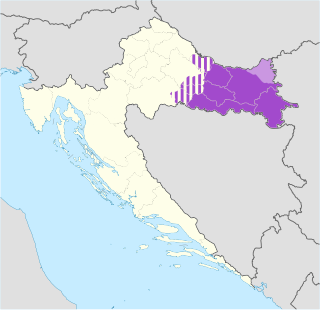
Slavonia is, with Dalmatia, Croatia proper, and Istria, one of the four historical regions of Croatia. Located in the Pannonian Plain and taking up the east of the country, it roughly corresponds with five Croatian counties: Brod-Posavina, Osijek-Baranja, Požega-Slavonia, Virovitica-Podravina, and Vukovar-Syrmia, although the territory of the counties includes Baranya, and the definition of the western extent of Slavonia as a region varies. The counties cover 12,556 square kilometres or 22.2% of Croatia, inhabited by 806,192—18.8% of Croatia's population. The largest city in the region is Osijek, followed by Slavonski Brod and Vinkovci.
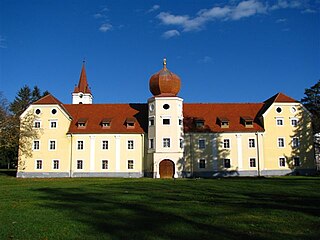
Požega-Slavonia County is a Croatian county in western Slavonia. Its capital is Požega. Its population was 78,034 at the 2011 census.
Stara Gradiška is a village and a municipality in Slavonia, in the Brod-Posavina County of Croatia. It is located on the left bank of the river Sava, across from Gradiška in Bosnia and Herzegovina.

The Bosut is a river in the Syrmia region of eastern Croatia and northwestern Serbia. It is a 186 km long, slow and meandering left tributary of the Sava river.

The Josip Juraj Strossmayer University of Osijek, commonly known as the University of Osijek (UNIOS), is a public university based in Osijek, Croatia. Established in 1975, it is the flagship institution of higher education in Slavonia, and one of the largest and oldest universities in Croatia.

Vojnić is a municipality in Karlovac County, Croatia. There are 4,764 inhabitants. The municipality is part of Kordun. Vojnić is underdeveloped municipality which is statistically classified as the First Category Area of Special State Concern by the Government of Croatia.

Čepin is a village and a municipality in Osijek-Baranja County, Croatia. It is located in northeast Slavonia, 10 kilometers southwest of Osijek.
Petrijevci is a village and a municipality in Slavonia, in the Osijek-Baranja County of northeastern Croatia.

The Museum of Contemporary Art is a contemporary art museum located on Dubrovnik Avenue in Zagreb, Croatia. It is the biggest and most modern museum in the country. Vesna Meštrić is current director of MSU, replacing Zdenka Badovinac in late 2023 first temporarily and as of 2024 officially.

D55 state road in the eastern part of Croatia connects the cities and towns of Vukovar, Vinkovci, Županja to the state road network of Croatia, and most notably to the A3 motorway. The road is 48.6 km (30.2 mi) long. The route comprises some urban intersections, mostly in the city of Vinkovci.

The Marton Museum is Croatia's first private museum and specializes in 18th and 19th century European applied art. The Marton Museum derives its name from its original founder, Veljko Marton, whose collection is featured within its walls.
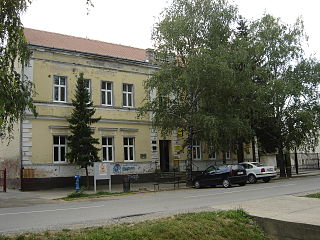
Tenja is a village in eastern Slavonia, Croatia, located just southeast of Osijek. The population is 7,376.

The Archaeological Museum in Zagreb, Croatia is an archaeological museum with over 450,000 varied artifacts and monuments, gathered from various sources but mostly from Croatia and in particular from the surroundings of Zagreb.

The Požega Valley is a geographic microregion of Croatia, located in central Slavonia, encompassing the eastern part of the Požega-Slavonia County. It is located in the Pannonian Basin, bounded by Psunj, Papuk and Krndija mountains from west and north, and Požeška Gora and Dilj from south and east, as the Pannonian plain is interspersed by horst and graben structures. The largest settlement in the region is the city of Požega, followed by Pleternica and Kutjevo. The main watercourse in the region is Orljava River. The region covers 1,249 square kilometres and has a population of 60,599.

Votive statue of the Holy Trinity is a stone statue representing the Holy Trinity in Osijek, Croatia. It is located in Tvrđa, on Holy Trinity Square.
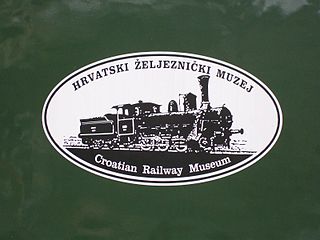
Croatian Railway Museum is a specialized technical museum in Croatian capital Zagreb, located on the premises of Zagreb Glavni kolodvor, the main railway station of Zagreb.
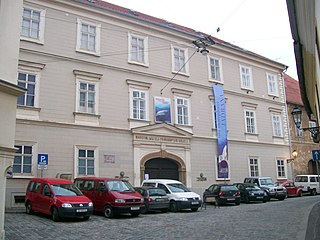
The Croatian Natural History Museum is the oldest and biggest natural history museum and the main body for natural history research, preservation and collection in Croatia. Located on Dimitrije Demeter Street in Gornji Grad, one of the oldest neighbourhoods of the Croatian capital Zagreb, it owns one of the biggest museum collections in Croatia, with over 2 million artefacts, including over 1.1 million animal specimens. It was founded in 1846 as the "National Museum". The National Museum was later split up into five museums, three of which were in 1986 merged as departments of the newly named Croatian Natural History Museum. The museum contains a large scientific library open to the public, and publishes the first Croatian natural history scientific journal, Natura Croatica.

Croatian History Museum is a museum of history located in the Vojković Palace on Antun Gustav Matoš Street in the historic Gornji Grad district of Zagreb, Croatia. The museum holdings consist of around 300,000 objects divided into 17 collections. In addition to a part of the Meštrović Pavilion, it also administers the Ivan Goran Kovačić Memorial Museum in Lukovdol.

Vučedol Culture Museum is a museum of prehistoric culture in at Vučedol, near the city of Vukovar, Croatia.
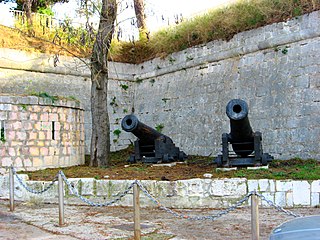
The Croatian Maritime Museum is a maritime museum in Split, Croatia. The museum is located in a 19th-century building, itself built within the 17th-century Gripe Fortress. The museum was established in 1997 as a successor to the Military-Maritime Museum established by the Yugoslav Navy in 1960 while also inheriting the collection of the Maritime Museum of the Yugoslav Academy of Sciences and Arts which existed between 1956 and 1985.




















